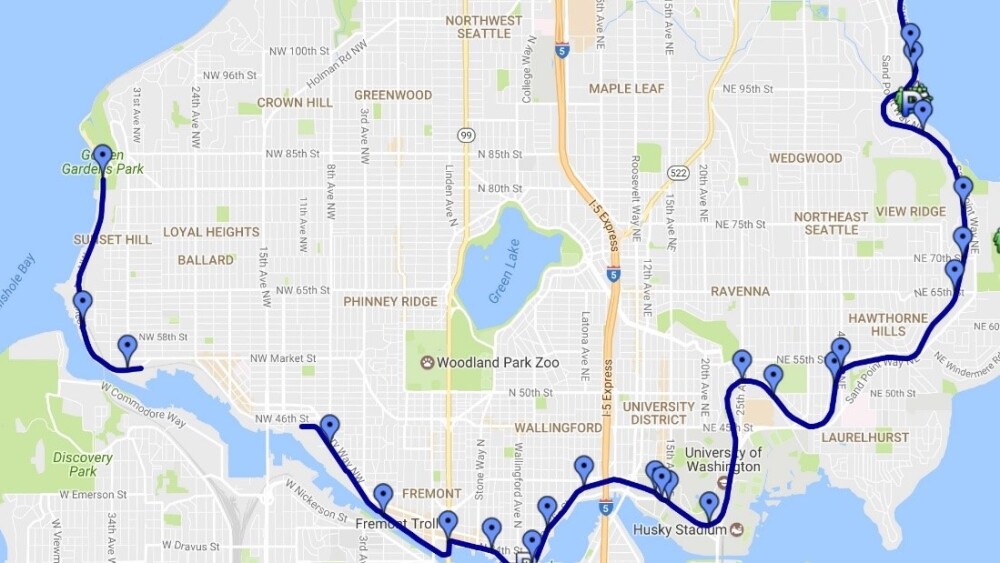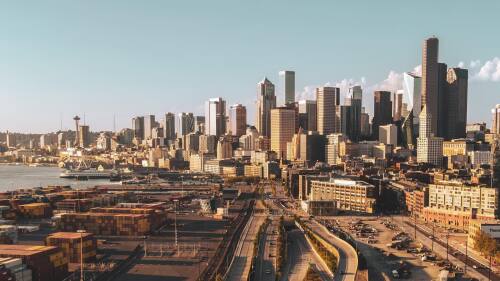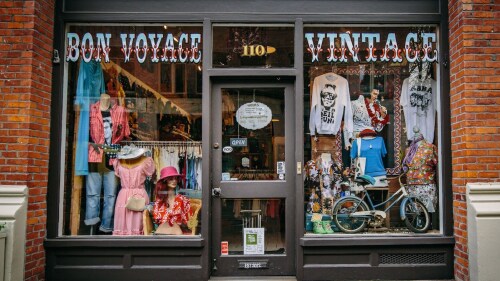Don’t look now, but there may be a road map to completing the Burke-Gilman Trail at long last.
Ballard’s City Councilman Dan Strauss recently submitted a new proposal to Mayor Bruce Harrell and the Seattle Department of Transportation (SDOT), looking to shake loose decades of delays in the neighborhood he represents.
Here’s what’s going on with the so-called missing link.
Long and winding road
The Burke-Gilman trail is a 20-mile bike route that runs from Golden Gardens Park in Seattle all the way to Bothell — however, part of the trail is disconnected in Ballard. Even though the separation has shrunk over time, there’s still a 1.4-mile gap near Salmon Bay — that’s the missing link.
For years, the city and industrial businesses have disputed the stretch at Shilshole Avenue (including train tracks the city wanted to move), which resulted in ongoing litigation. This has slowed down Seattle’s construction plans.
Dan with a plan
Instead of waiting to complete the gap on Shilshole, Strauss proposed a connection for Burke-Gilman two blocks away at Leary Avenue. The path would include 12 feet of space for biking, strolling, scooting, and other uses — as well as a 5-foot buffer from cars.
According to Strauss, the advantage of the Leary proposal is that it avoids the large shipping industries and directs folks closer to shops and restaurants. The trail already runs in proximity to thoroughfares like Market Avenue — so Strauss hopes this route would be a similar win-win for businesses and bikes.
What’s next?
SDOT is currently reviewing the plan to determine its viability. Potential pitfalls that could affect whether the plan moves forward or not include project costs and other urban design challenges. However, Strauss wrote that he hopes his proposal could still be used as a “baseline” for future design considerations.
If SDOT decides to move forward with the plan — or a variation of it — expect public meetings for feedback, so stay tuned.












